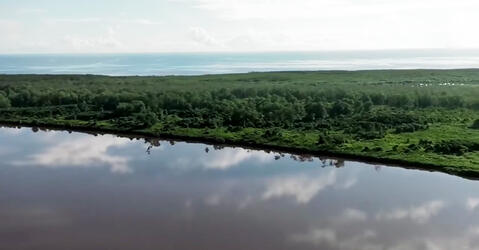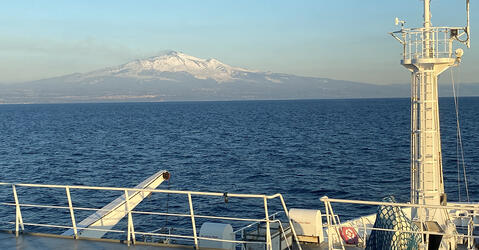You are here
Breathing On Top Of The World
Headaches, vertigo, sleep apnea – altitude sickness begins to manifest once we get above 2,500 meters. But do we all experience these extreme conditions the same way?
At a lab in the French Alps, a team of scientists is curious about the effects of oxygen deprivation on our bodies – and the vascular and respiratory problems that it can cause. Samuel Verges is a physiologist who studies hypoxia in his lab, hosted by the local Hospital.
In these rooms, patients suffering from respiratory or vascular conditions are surrounded by medical teams following their physical exertion tests. Certain experiments place the subject in different altitude conditions, reducing the availability of oxygen in the air they breathe. By quantifying the body’s response to the stress, researchers are working to define our capacity to adapt and function in different scenarios.
Samuel Verges – Physiologist – Hypoxia Specialist
These are different models of altitude exposure simulated in the lab, which can go for about twelve hours, or one night. So when we really want to bring lowland subjects to altitude we use the French or European Alps where we have research stations like the observatory of Vallot below Mont Blanc. There we can spend a few days with them at 4,300m, where we’ve already conducted some research. The next model to develop is with people who permanently live at high altitude, which we don’t find in Europe, so we have to move to other mountainous regions around the world, like the Himalayas and Andes. There we can find towns at over 4000 to even 5000m.
It’s to one of these high-altitude towns in the Andes that Samuel Verges traveled to in hopes of engaging the local population. The adventure, called Expedition 5300, pulled together over a dozen scientists from different disciplines who will study the population of La Rinconada, Peru, the highest permanent human settlement in the world.
But first, Expedition 5300 must make a stop in the capital, Lima. Sitting at sea level, Lima serves as an obvious control. Twenty volunteers will undergo experiments and give blood samples that will later be compared to those taken in La Rinconada. After stopping in Puno, at 3,800m, where the researchers begin observing the first symptoms of altitude sickness, the team finally reached La Rinconada by road. It was established as a gold mining town and now is home to over 50 000 people. Mostly miners and their families who suffer health problems those linked to the mercury used in the mines and those linked to life at high altitude.
Stephane Doutreleau – Cardiologist
Above 2,500m, as we arrived at higher altitudes and could feel the lack of oxygen, the body, which doesn’t store oxygen for later use, has to figure out how to get more. So we breathe harder and the heart accelerates. However when you linger at a given altitude you can develop symptoms in a few hours, essentially a headache, nausea [vomiting], a lack of appetite, vertigo… this is what we call acute mountain sickness. On the other hand, for populations who permanently live at altitude, they can undergo the development of another pathology we call chronic mountain sickness. It may be less understood than acute mountain sickness but comes with quite the bundle of general symptoms like migraines, tingling in the arms and legs, symptoms like that.
Lacking hospitals and doctors, the people of La Rinconada eagerly awaited the scientists’ arrival. Several hundred met with them for clinical checkups, and about fifty agreed to participate in the study. They were separated into two groups, one suffering symptoms of mountain sickness and the other not. They will also provide blood samples, while undergoing exertion, sleep, and tension analysis. The results will be compared to those collected in Lima and Puno.
Samuel Verges [this section led me to believe he needs to take a communications course]
There are already obvious enough results that we’ve obtained across the three cities, for example the quantities of red blood cells that increase as you go higher in elevation, in other words heightened hemoglobin levels. We call it hematocrit, the percentage of space taken up by red blood cells, and La Rinconada had probably the highest values we’ve ever measured at 80%. In Lima they were at 40%. And then in La Rinconada there’s a percentage of people affected by chronic mountain sickness, nearly a quarter of the population suffering oxygen deprivation. Whereas in Lima they’ve never seen health issues like that, and in Puno, at 3,800m, less than 5% of the population suffers chronic mountain sickness.
Back in France, the samples taken will be sent to multiple labs like the Institute for the Advancement of Biosciences in Grenoble. There, Saadi Khochbin, a biologist specializing in genetics, will supervise the analysis of the blood samples sent by Expedition 5300. The researchers will extract DNA from the blood and map the genome of different Peruvians in order to better understand the links between heredity and the ability to adapt.
Saadi Khochbin – Molecular Biologist
Whether innate or acquired is an important question, and I think that this analysis will enable us to find elements of the answer. By sequencing individual’s DNA we can know if there was an element within the genome - a specific sequence that was passed down from generation to generation, through DNA. Are these variations at the sequential level able to explain certain behaviors that we have observed - well, that the doctors observed when they were there?
It will take a few more months for the DNA to reveal its secrets. These coming discoveries could enable better aid to be given to the people of La Rinconada, as well as to other victims of respiratory illnesses. In the near future, the results could also help the next astronautes better adapt to low-oxygen environments… and clear new paths for Scientists wishing to explore the frontiers of human biology.
Breathing on top of the world
At an altitude of 5,300 metres, the city of la Rinconada, Peru, is the highest permanent human settlement in the world. While many residents suffer from hypoxia, oxygen deprivation, others are unaffected. A team of scientists led an expedition to study such extreme living conditions and find out what allows some people to adapt.
UNIVERSITE GRENOBLE ALPES / INSERM- LABORATOIRE HYPOXIE ET PHYSIOPATHOLOGIE
Stéphane Doutreleau
CHU GRENOBLE-ALPES
Saadi Khochbin (CNRS)
INSTITUT ALBERT BONNIOT / INSERM / UNIVERSITÉ GRENOBLE ALPES / CNRS





